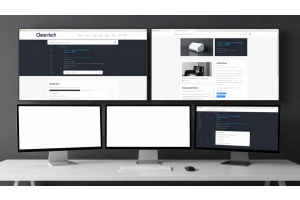Complete Guide to Enable or Disable Reorders settings in Magento 2.4.x

Complete Guide to Enable or Disable Reorders settings in Magento 2.4.x
Magento 2 includes a built‑in feature that lets you duplicate past orders (“reorder”) both on the storefront and in the backend. By default, reordering is enabled globally, but you can disable it or scope it per website, store, or store view through the Sales configuration. On the storefront, customers see “Reorder” links in their account under My Orders or on individual order pages; in the admin, reorders can be triggered from the Orders grid or order view screen. Some order statuses (like Hold or Payment Review) and out‑of‑stock items will automatically hide the reorder option. Below is a detailed, Magento 2.4.7‑compatible guide—with configuration paths, scope controls, customer experience, admin controls, best practices, and troubleshooting—to help you manage reorder functionality effectively.
Table Of Content
Reordering in Magento 2: Functional Overview and Best Practices
Reordering is a powerful customer experience feature in Magento 2 that allows buyers to quickly duplicate a previous order's items into a fresh shopping cart. This helps users save time and increases the chance of repeat purchases.
Purpose of Reorder Functionality
The main goal of the reorder feature is to streamline the customer journey by reducing the effort required to purchase previously ordered products. It also benefits store administrators by simplifying order management workflows.
How Reordering Works
A. Customer Storefront Reorder
Customers can access the reorder function from:
- My Orders Dashboard: Each previous order listed in the account has a “Reorder” option, assuming it meets eligibility criteria.
- Order Detail Page: Inside the individual order view, a reorder button allows users to replicate the cart with all items from that order.
B. Admin Panel Reorder
Magento allows administrators to initiate a reorder from:
- Sales > Orders Grid: Each order row includes a “Reorder” action.
- Order View Page: The reorder button replicates all relevant product configurations for a new order.
Reorder Availability Conditions
Not all orders are eligible for reordering. Magento evaluates various conditions before showing the reorder button on the storefront.
Order Status Restrictions:
| Order Status | Reorder Availability |
|---|---|
| Complete | Shown |
| Processing | Shown |
| Closed | Shown |
| On Hold | Hidden on frontend, allowed via admin |
| Payment Review | Hidden on frontend, allowed via admin |
| Canceled | Not shown anywhere by default |
Reorder Functionality Matrix
| Area | Trigger Location | Eligibility Check | Behavior |
|---|---|---|---|
| Storefront (Customer Dashboard) | My Orders / Order Detail | Product availability, order status, stock status | Adds items to cart and redirects to cart |
| Admin Panel | Orders Grid / Order View | Product availability, reordering enabled in config | Creates a duplicate order draft |
| REST API / Custom Controller | Programmatic | Must validate order and products manually | Allows integration with other platforms |
Considerations and Best Practices
- Product Availability: Reorder will fail silently or partially if any product in the original order is no longer available or out of stock.
- Reorder Button Configuration: You can enable/disable reordering in Stores > Configuration > Sales > Sales > Reorder.
- Performance: On high-traffic stores, excessive use of reorder may affect cart performance if products had many custom options or configurations.
- Stock Management Integration: Ensure reordering respects current inventory quantities, especially if using backorders or multiple warehouses.
Magento’s reorder feature is a user-friendly and sales-boosting function. When configured correctly, it enables faster purchases, better customer satisfaction, and smoother backend operations. However, businesses must be aware of restrictions and maintain clean product availability data to avoid customer confusion or failed reorders.
Magento 2.4.7 Reorder Functionality – Configuration, Scope, and Best Practices
Magento’s reorder feature streamlines the purchasing process by allowing previous orders to be duplicated into the cart. This function is particularly valuable for returning customers or subscription-based businesses where the same products are purchased repeatedly.
Admin Panel Configuration
You can control the reorder capability directly from the admin configuration:4>
Steps to Enable or Disable Reorder Functionality:
- Go to Stores → Configuration → Sales → Sales
- Expand the Reorder section
- Set Allow Reorder to:
Yes— to enable the functionalityNo— to disable it completely
- Click
Save Config - Navigate to
System → Cache Management, and flush Magento’s cache to apply changes
Configuration Reference Table
| Setting | Config Path | Scope Options | Default | Explanation |
|---|---|---|---|---|
| Allow Reorder | sales/reorder/allow |
Global, Website, Store, Store View | Yes | Controls the display and availability of the reorder feature |
Scope Handling in Magento
Magento supports granular control of configuration settings using scopes:
- Global: Applies to the entire Magento installation
- Website: Used when managing multiple websites (each with its own currency and domain)
- Store: Useful for businesses running multiple stores under the same website
- Store View: Ideal for multi-language or brand-specific setups
Pro Tip:
You can switch scopes using the Store View Selector in the top-left corner of the Admin Configuration page.
This flexibility allows you to enable reorder functionality in some areas of your business (e.g., retail stores) and disable it in others (e.g., B2B portals).
Behavior Across Storefront and Admin Panel
| Area | Trigger Location | Eligibility Criteria | Behavior Description |
|---|---|---|---|
| Storefront | My Orders / Order Detail Pages | Product availability, stock status, order status | Adds valid items to cart and redirects customer to cart page |
| Admin Panel | Order View or Orders Grid | Requires reorder enabled in config | Allows admin to create a duplicate draft order |
| API / Custom Controller | Custom REST or GraphQL endpoints | Manual validation required | Enables programmatic reordering for integrations or automation |
Order Status-Based Reorder Availability
| Order Status | Storefront Visibility | Admin Access |
|---|---|---|
| Complete | Shown | Allowed |
| Processing | Shown | Allowed |
| Closed | Shown | Allowed |
| On Hold | Hidden | Allowed manually |
| Payment Review | Hidden | Allowed manually |
| Canceled | Not shown | Not allowed by default |
Additional Use Cases
- B2C Websites: Enabling reorder provides ease and convenience for customers who buy frequently.
- B2B Portals: Reordering may need to be disabled or restricted to avoid procurement errors or policy violations.
- Subscriptions & Repeat Orders: If your business offers weekly or monthly ordering cycles, this feature can drastically improve UX.
- Out-of-Stock Handling: Magento automatically skips or warns users when reordered products are no longer available or disabled.
Best Practices
- Review order statuses regularly to ensure reorder links are displayed appropriately.
- Test reorder in various scopes (Global vs. Website vs. Store View) before rolling out changes.
- Combine with inventory and stock notifications to ensure a seamless reorder experience.
- Use custom modules or observers to log reorder actions, track reorder conversion rates, or apply special discounts to reorders.
Advanced Reorder Functionality in Magento 2.4.7 – Store View Overrides
Magento’s flexible architecture allows you to control the reorder feature not just globally but also at granular levels such as website, store, and store view. This gives merchants full control over how the reorder functionality is presented and behaves across different customer groups, languages, geographies, and business models.
Why Store View Overrides Matter
Store View Overrides allow merchants to define reorder behavior independently across regions or store variations. This is especially beneficial for:
- International Stores: Local regulations, shipping restrictions, or logistics constraints may require you to disable reordering in certain countries while keeping it enabled elsewhere.
- Multi-language Setups: Certain translations or labels associated with reorders might only be completed for some store views, so you can limit the feature where it's not yet ready.
- Multiple Brands or Divisions: If your store operates under different brand identities using store views, each may have unique reorder policies based on brand tone, return policy, or inventory handling.
- Market Testing and A/B Experiments: Reorder can be enabled in a test store view for performance or usability evaluations before rolling it out across the board.
How to Enable or Disable Reorder by Store View
Admin Configuration Steps:
- Go to Admin Panel
- Navigate to:
Stores → Configuration → Sales → Sales - Expand the Reorder section.
- Change Allow Reorder to:
- Yes – to enable reordering.
- No – to disable reordering.
- At the top-left, select the relevant Store View from the dropdown.
- Click Save Config.
- Flush Magento cache (
System → Cache Management) for the changes to reflect.
Detailed Scope Explanation
| Scope Level | Use Case Example |
|---|---|
| Global | Default setting for all stores under the Magento instance. Best used when reorder is required across all stores. |
| Website | Useful when multiple websites (domains) are managed separately, each with different reorder policies. |
| Store | Controls reorder across a group of store views that share the same product catalog and customer base. |
| Store View | Ideal for store views offering different languages, currencies, or branding. Customize reorder visibility per locale. |
Configuration Reference Table
| Setting | Config Path | Scope Options | Default | Explanation |
|---|---|---|---|---|
| Allow Reorder | sales/reorder/allow | Global, Website, Store, Store View | Yes | Controls whether customers and admins can reorder previous orders. Can be overridden at each scope level. |
Technical Considerations for Scoped Reorder
- Product Availability Check:
Even if reorder is enabled for a store view, products from previous orders will not be added to the cart if they are disabled, out of stock, or removed from the catalog. - Reorder Link Visibility:
Reorder buttons appear on the My Orders section of the frontend only when allowed and only for orders in specific statuses like Complete, Processing, or Closed. - Scope Overrides and Conflicts:
Settings applied at the store view level will take precedence over global settings. Be cautious when managing large setups to avoid inconsistent behavior across views. - Frontend and API Consistency:
If you're using custom storefronts or APIs, ensure that the scope-specific reorder setting is correctly respected in your programmatic logic.
Best Practices
- Document Customizations:
Maintain a configuration matrix for all your store views, documenting which reorder settings are active where. - Validate After Changes:
After modifying reorder settings, test each store view by logging in as a customer and attempting to reorder a past order. - Synchronize Inventory Policies:
Ensure reorder settings align with your stock allocation, especially if using multi-source inventory (MSI) or custom stock modules. - Train Admin Users:
If reorder is disabled on the frontend, ensure your support or admin teams understand they can still perform reorders from the backend when needed. - Leverage Event Observers:
Use Magento’s event system (e.g., sales_order_reorder) to log, customize, or restrict reorder behavior based on additional logic such as customer group, product type, or date range.
Enhanced Overview of Reorder Functionality in Magento
Magento's reorder system provides a seamless way for customers and administrators to quickly replicate a previous order, improving shopping convenience and order management. The feature depends on inventory status, configuration settings, and order eligibility.
1. Customer Experience on the Storefront
Once reorder functionality is enabled through configuration and necessary product/order checks pass, customers can access the feature directly from their account section.
Frontend Access Points and Behavior
| Frontend Location | Description |
|---|---|
| My Orders List | A "Reorder" link appears next to each eligible order. |
| Order Detail Page | A "Reorder" button appears in the order action panel for individual orders. |
Behavior Details
- If certain items in the order are out of stock or disabled, the system may:
- Omit those items silently when adding to the cart.
- Disable the reorder link entirely depending on the configuration.
- Reordering does not clear the customer's existing cart.
- Instead, it appends the reordered items to any existing items already in the cart.
- This allows multi-order preparation without losing previously selected products.
Admin-Side Reorder Functionality
Magento administrators can force a reorder even if storefront checks would typically prevent it.
How to Reorder from the Admin Panel
- Go to Sales → Orders in the admin backend.
- Click View on the desired past order.
- Click the Reorder button located within the order's top toolbar.
Admin-Specific Capabilities
- Reorder from the admin bypasses most storefront-level restrictions such as:
- Out-of-stock status
- Disabled products
- Restricted order statuses (e.g., Hold or Payment Review)
- This flexibility is ideal for:
- Processing phone orders
- Manual reordering for recurring customers
- Quick duplication of complex orders
Additional Notes on Frontend vs Admin Behavior
| Condition | Storefront Behavior | Admin Behavior |
|---|---|---|
| Product is out of stock | Item may be skipped or link hidden | Can be added to new order |
| Reorder disabled in configuration | No link/button shown | Admin can still perform reorder manually |
| Order has restricted status | Reorder not available | Allowed in most cases |
| Cart already contains items | Reordered items are appended | New order draft created |
Tip
To enhance your eCommerce store’s performance with Magento, focus on optimizing site speed by utilizing Emmo themes and extensions. These tools are designed for efficiency, ensuring your website loads quickly and provides a smooth user experience. Start leveraging Emmo's powerful solutions today to boost customer satisfaction and drive sales!
Conclusion
The reorder functionality in Magento 2 offers a powerful tool for enhancing the customer experience by simplifying the process of repurchasing items from previous orders. Whether it's on the storefront, admin panel, or via API, this feature ensures that customers and administrators alike can efficiently manage reorders, improving convenience and operational efficiency.
In the frontend, customers can easily reorder items via the "Reorder" link or button in their order history, with intelligent behavior that respects stock status and availability. For admins, the ability to reorder regardless of item status ensures flexibility for managing orders manually, particularly in cases where customers cannot access the storefront.
Configuration settings allow for fine-tuned control over when and where reordering is available, including scope-level overrides for different store views, websites, and regions. By using the powerful Magento system, including event observers and custom API integrations, businesses can tailor reorder functionality to meet specific needs, while maintaining consistency across their operations.
Configuration settings allow for fine-tuned control over when and where reordering is available, including scope-level overrides for different store views, websites, and regions. By using the powerful Magento system, including event observers and custom API integrations, businesses can tailor reorder functionality to meet specific needs, while maintaining consistency across their operations.
FAQs
What is the reorder functionality in Magento 2?
The reorder functionality in Magento 2 allows customers to quickly repurchase items from previous orders by clicking a "Reorder" link or button. Admins can also reorder past orders through the backend.
Where can customers find the reorder link?
Customers can find the reorder link in their "My Orders" list or within the order detail page under the action toolbar. It will only appear for orders that are eligible for reordering.
What happens if an item is out of stock when reordering?
If an item is out of stock, the reorder link may be hidden or the item may be skipped during the reorder process. Customers will not be able to reorder out-of-stock items through the storefront.
Can admins reorder past orders?
Yes, admins can reorder any past order regardless of the item availability. They can do this through the "Orders" section in the Magento admin panel by clicking the "Reorder" button.
Can a customer reorder an item that is marked as "out of stock"?
Customers cannot reorder out-of-stock items via the storefront. However, admins can manually reorder out-of-stock items in the backend.
How can the "Reorder" feature be enabled or disabled in Magento?
The reorder feature can be enabled or disabled through the admin configuration path: Stores → Configuration → Sales → Sales → Reorder. The option is available at the global, website, store, and store view levels.
What happens when reorder is disabled in the configuration?
If reorder is disabled in the configuration, customers will not see the reorder link or button on the frontend. However, admins can still perform reorders manually in the backend.
Can admins reorder orders with restricted statuses?
Yes, admins can reorder orders with restricted statuses such as "On Hold" or "Payment Review" in most cases, even though the reorder link may not be available on the frontend for customers.
Does Magento support reordering through REST APIs?
Yes, Magento supports reordering via custom REST or GraphQL endpoints. This allows for programmatic reordering for integrations or automation purposes.
What should I do if an item is unavailable when reordering?
If an item is unavailable, it will either be skipped or not shown during the reorder process, depending on your store's configuration. Customers can still reorder available items.
Can reorder settings be customized for different store views?
Yes, reorder settings can be customized for different store views by using scope-specific configurations. You can enable or disable reorder functionality for each store view, website, or even globally.
How does Magento handle orders with existing items in the cart when reordering?
When reordering, Magento appends the items from the previous order to the existing cart instead of replacing the current cart contents.
What does the "Reorder" button do in the admin panel?
The "Reorder" button in the admin panel allows the administrator to create a duplicate draft order of a past order. This is useful for manually processing customer requests or phone orders.
Can I configure reorder for specific websites or store views?
Yes, Magento allows you to configure reorder settings specifically for each website or store view. This way, different reorder rules can be applied to different regions, languages, or customer segments.




